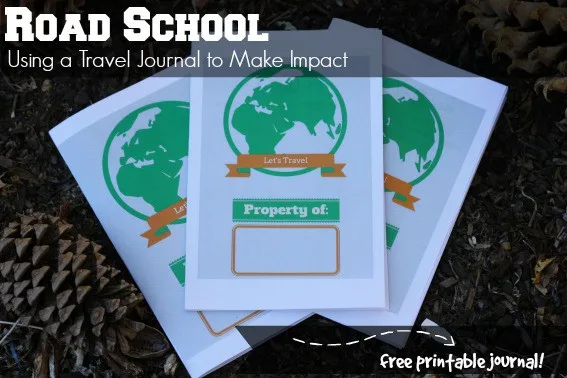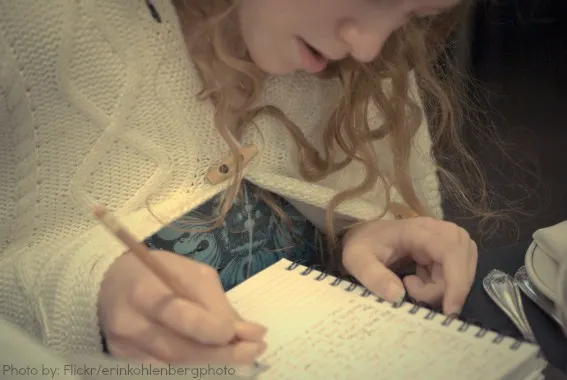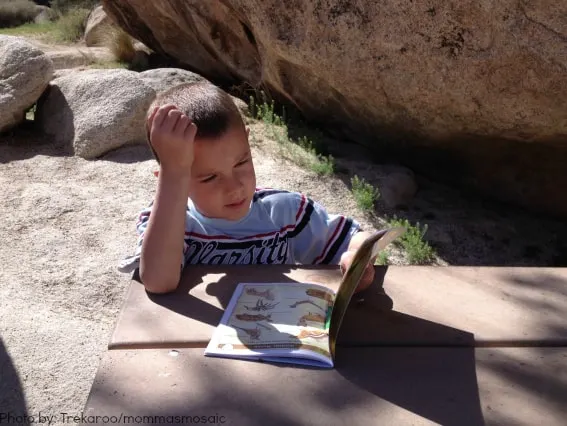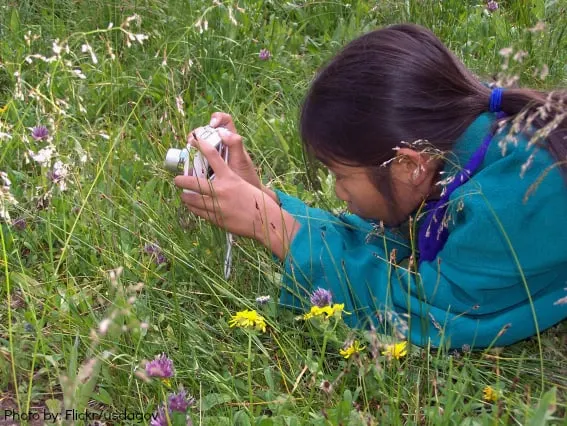The silence of the trail. The quickened heart-beat at the glimpse of a doe and her twin fawns. The smell of the dirt after a rain. The softness of the layers of leaves and duff under the feet. A 20-minute walk in the woods can awaken all of the senses. But, how can we, as adults, make a moment like this stick with kids?
When we give kids the ability to relate what they experience (see, hear, touch, taste, and smell) with how they feel, we empower them to be empathetic, and think critically. One way to give kids the opportunity to connect with travel is by journaling.
Why journal while traveling
Journaling has been a powerful tool for our family and our 5-year-old. Open-ended questions and blank space allow a child to think freely and express whatever needs to be expressed. (Sometimes, this means a picture about a rhinoceros when we spent the day visiting a snow-covered mountain, and that’s okay.) What’s great about a journal is that adults get the opportunity to learn what peaked that child’s interest, passion, and what pulls at his/her heart-strings as well as what wasn’t understood or glossed over. These journals lead to deeper meaningful conversations about the experiences and their effect on a child’s life.
When to journal
It has worked well for our family to use a travel journal as a transition to a time of settling down. Since my son is still young, this means either rest time, while we prepare a meal, or before bed. We’ve also found that it works well to use when he gets over-stimulated. Between adventures or after a busy day, journaling has helped him to recount his experiences, while allowing his body to regulate itself so that he is ready to take in more adventures. Kids’ sensory systems can process less than adults before their minds can’t take in any more (hence the meltdowns or apathy that happen to even the usually most well-behaved, compliant child). In my time traveling with little ones, as a camp counselor, and as a licensed social worker, I’ve learned that we must give the kids the space to process as we go along.
Where to journal
There are lots of places where a child can journal no matter where a trip may take you. We’ve journaled at a rest stop, in hotel rooms, at picnic tables, in parks, restaurants, and around the campfire. (If carsickness doesn’t plague your family, it’s a great activity for a drive as well.) The location itself doesn’t really matter. What is important is making sure that the environment is conducive to thinking. What that looks like will vary depending on your family. For instance, I know that I’m going to be able to process better, and be more effective if I’ve eaten, am still, and in relative silence (or at least white noise). This is when I’m finally able to allow my brain to catch up with everything that it has taken in. But, silence for some people is deafening, and a loud place where they can be creative and move their bodies is going to be more effective.
But my child hates writing, aren’t there other options?
Definitely! For some families, the thought of having a writing time each day during a trip could produce tears (both from parents and kids). While writing is important, the goal of journaling (at least as we are discussing in this post), is to create meaning from experiences. If writing doesn’t provide that for your child, then by all means, use another tool that will.
Some other ideas for giving space to process depending on the child’s learning style and personality can include:
- Drawing
- Creating a collage
- Taking photographs/videos
- Responding verbally to questions in the journal
- Audio journaling using a voice recorder
- Building/Creating (Use LEGOS, dolls, sticks, clay, or other manipulatives to re-create touch points from the day.)
- Acting the answers out.
*For more insight on travel journaling check out our posts Road School: Crafting an Engaging Educational Trip for Kids.
Free Printable: A weekend journal for Trekaroo readers
To help get your family started on travel journaling, we’ve created three 3-day journals perfect for a weekend getaway or a short trip. The journals are filled with daily open-ended questions that are meant to build upon each other, and to be used on any trip. All align with Common Core ELA Standards in that they engage critical thinking, and can be used cross-discipline. A trip to the Grand Canyon, for example, would likely produce a journal filled with history and geology. (Always check with your child’s teacher to ensure that a journal would be acceptable in his/her class.) The first day focuses on identification, specifically, identifying something that they’ve experienced. Day two focuses on connection, connecting what they’ve experienced with how they feel. Day three culminates in student critical thinking by asking a transformative question, how what they’ve experienced impacted them. We hope you enjoy them.
Trekaroo Let’s Travel Journal – Younger Grades (K-2)
Trekaroo Let’s Travel Journal – Middle Grades (3-6)
Trekaroo Let’s Travel Journal – Older Grades (7-12)
Share in the comments, How have you used a travel journal with your family?
Looking for more in our Road School Series? Check out this landing page with links to all of our Road School Guides.
- Idaho Family Vacations- 10 FUN Things to do in Idaho with kids! - April 19, 2024
- These Disney Special Events Are Worth Planning Your Trip Around - March 14, 2020
- Run Magical Miles with runDisney - March 14, 2020






